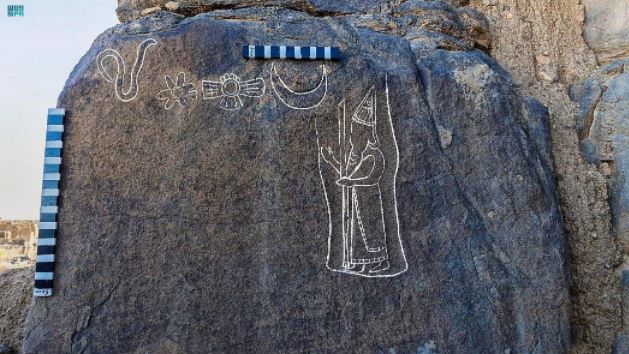Anthropology
Related: About this forumCuneiform inscription from last king of Babylon discovered in Saudi Arabia
By Owen Jarus - Live Science Contributor about 21 hours ago
It's the longest such inscription in Saudi Arabia.

The top of the inscription from the last king of Babylon shows engravings showing Nabonidus
and four symbols. (Image credit: Courtesy Saudi Press Agency)
A 2,550-year-old inscription, written in the name of Nabonidus, the last king of Babylon, has been discovered carved on basalt stone in northern Saudi Arabia, the Saudi Commission for Tourism and National Heritage recently announced.
An engraving at the top of the inscription shows King Nabonidus holding a scepter alongside four other images that include a snake, a flower and a depiction of the moon, the commission said in a statement, noting that these symbols likely have a religious meaning.
These engravings are followed beneath by about 26 lines of cuneiform text that experts with the commission are currently deciphering. This is the longest cuneiform inscription ever found in Saudi Arabia, the commission said in the statement.
The inscription was found in Al Hait in the Hail region of northern Saudi Arabia. Known as Fadak in ancient times, Al Hait holds numerous ancient sites, including the remains of fortresses, rock art and water installations, the commission said. "[It] has great historical significance from the first millennium [B.C.] until the early Islamic era."
More:
https://www.livescience.com/longest-cuneiform-inscription-last-babylon-king-saudi-arabia.html
Effete Snob
(8,387 posts)It says “A snake ate my buds, got really high, and fell asleep.”
lastlib
(24,905 posts)2naSalit
(92,680 posts)Who can't read that?
Cool find!